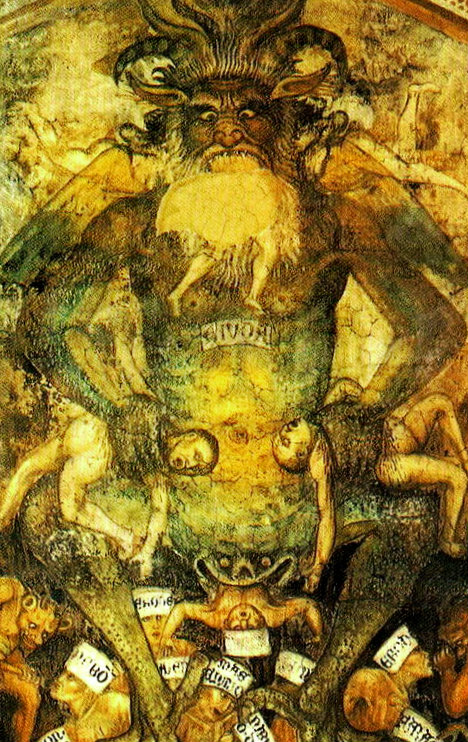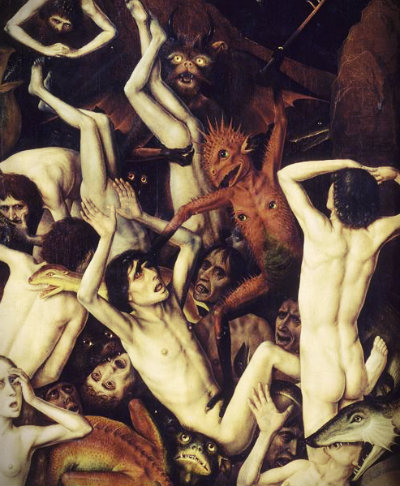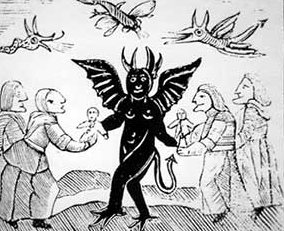|
Art Inspired by The Black Death A Galley of Paintings Inspired by the Plague in Medieval Europe
Byzantine,
Gothic and
Northern
Renaissance
artists
represented Christian culture and values. Depictions of the
apocalypse, fiery furnace, satan and sly demons reached a fever pitch
after the great
plague
of the mid 14th century. The devil and his crafty minions were often
depicted in art, literature and even songs. According to the
Bible, Revelation 14:11 "And the smoke of their torment goes up forever
and ever, and they have no rest, day or night, these worshipers of the
beast and its image, and whoever receives the mark of its name.”

"Hell
hath no limits, nor is circumscribed
Images of hell, death, demons and false prophets produced during the Medieval era were influenced by the devastating plague that swept across Europe during the mid 1300s.
In a culture of limited literacy symbolic imagery was vital in enlightening the masses. Byzantine, Gothic and Early Renaissance paintings are rich in philosophical and Christian symbolism regarding serpents.
The Dragon - the emblem of heathen evil and Satan, the spiritual enemy of mankind. Saint Michael and Saint George are often depicted battling and slaying the dragon symbolizing their triumph over evil. Snake - symbolizes Satan; the presence of evil, fall of man The pitchfork and trident are both symbols of the devil Snake in a fruit tree - signifies the mans fall from grace as well as Satan's meddling in the affairs of men. A snake brazenly slithering across the middle of a thoroughfare or road - symbolizing the False Prophet leading the way to hell. A devious serpent peeking out of a basket, urn or pot - a spiritual reminder of Satan's presence in unusual places.
The Color Red - a symbol of greediness and lust. Denotes sin; sins of mankind, Satan, original sin; temptation, Judas, Harrowing of Hell, The Fiery Furnace, Slaughter of the Innocents, the Apocalypse . Goat - symbol of the Devil. Satan is often depicted as a horned and hoofed goat-like creature. Wasp - symbol of the Devil or his henchmen. Satan is often depicted as a devilish winged creature. The wasp or yellow jacket is symbolic of Satan's relentless hunt for easily corrupted souls and backsliders. |
|
|
The Meaning of Sacred Symbols in Paintings. Most prominently featured symbols and their meaning: Western in Symbols and Signs
The Four Evangelists Mythological Creatures © HistoryofPainters.com If you like this page and wish to share it, you are welcome to link to it, with our thanks.
If
you feel you have
worthwhile information you would like to
contribute we would love to hear from you. We collect essential
biographical information and artist quotes from folks all over the
globe and appreciate your participation. When submitting please, if
possible, site the source and provide English translation. Email to
historyofpainter@gmail.com
|
|
Important
Gothic Painters |



